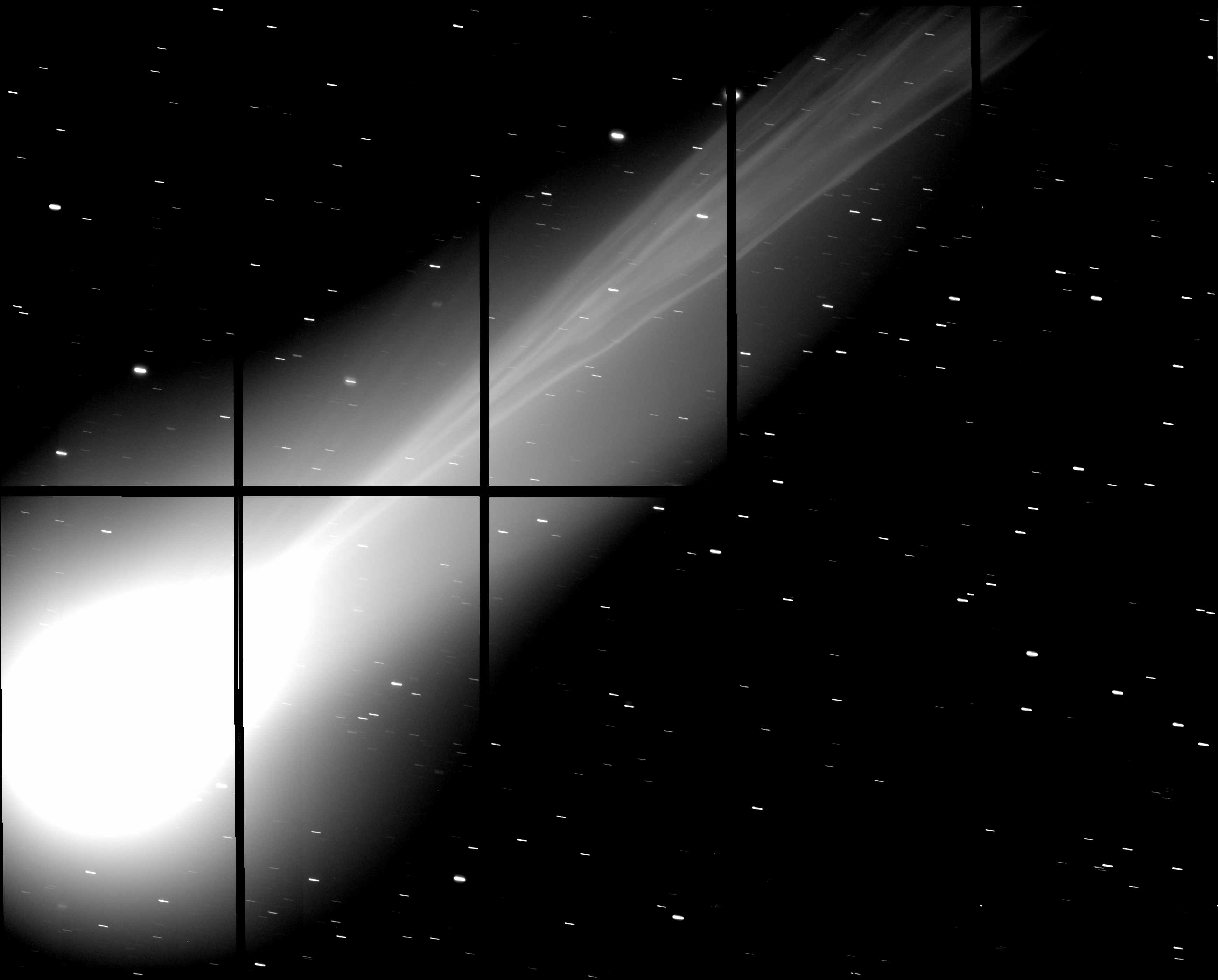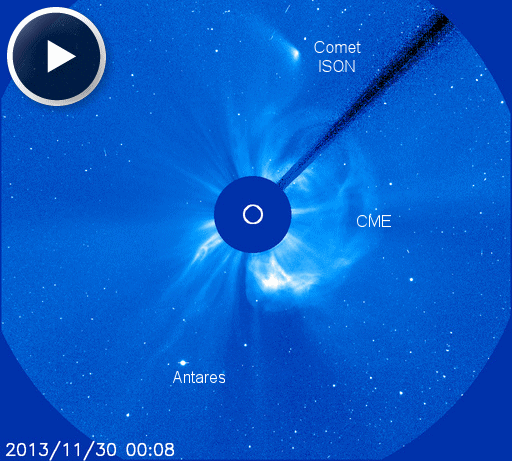Comet C/2012 S1 (ISON)
Born 4.5 Billion BC, Fragmented Nov 28, 2013 (age 4.5-billion yrs old)
Born in a dusty and turbulent environment, comet ISON spent its early years being jostled and struck by siblings both large and small. Surviving a particularly violent first few million years, ISON retreated to the Oort Cloud, where it maintained a largely reclusive existence for nearly four billion years. But around 3-million B.C., a chance encounter with a passing star coerced ISON into undertaking a pioneering career as a Sungrazer. On September 21, 2012, ISON made itself known to us, and allowed us to catalog the most extraordinary part of its spectacular vocational calling.
Never one to follow convention, ISON lived a dynamic and unpredictable life, alternating between periods of quiet reflection and violent outburst. However, its toughened exterior belied a complex and delicate inner working that only now we are just beginning to understand. In late 2013, Comet ISON demonstrated not only its true beauty but a surprising turn of speed as it reached its career defining moment in the inner solar system. Tragically, on November 28, 2013, ISON's tenacious ambition outweighed its ability, and our shining green candle in the solar wind began to burn out.
Survived by approximately several trillion siblings, Comet ISON leaves behind an unprecedented legacy for astronomers, and the eternal gratitude of an enthralled global audience. In ISON's memory, donations are encouraged to your local astronomy club, observatory or charity that supports STEM and science outreach programs for children.
Courtesy - Karl Battams






